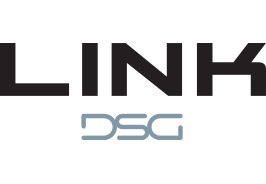Insights and inputs from our team and around the web.

- Details
- Written by: Chris Miller
Dear Sales Rep,
You measured wrong. Instead of explaining to your client the importance of a professional site survey, you decided you wanted to do it yourself. We get it, you wanted to save your client a few extra dollars. But, guess what happened? The graphic your production facility printed for those windows was 6” too short on both the top and the bottom.
Your client is in a pinch because the Executive Team was scheduled to conduct a walk-through of the location the day following installation. They had plans to see how everything looked and to make a decision if they wanted to roll out this piece at all of their stores or not.

- Details
- Written by: Richard Lira
In today’s connected world we have access to everything we want and need at our fingertips. We can access this information through our laptops, smart tablets, and even our mobile devices. Because of how available this information is, it’s incredibly easy to get wrapped up in Facebook, e-mail, Google, YouTube, and more.

- Details
- Written by: Todd Howgard
A long time ago in a galaxy far, far away…
Rebel pilot Luke Skywalker fires two proton torpedoes into the thermal exhaust port of the Death Star. Moments later, he witnesses the huge explosion behind him. The destruction of the Death Star left the Imperial Military in a weakened state and prompted the necessity of constructing a second Death Star.

- Details
- Written by: Kim Muncy
Do you ever leave the office at the end of the day wondering what you have accomplished? Do you ever feel that if you have one more interruption you are going to blow a gasket? Don’t worry, you’re not the only one.
Interruptions come in all shapes and sizes and many of us encounter various interruptions throughout the day. Phone calls, e-mails, text messages, clients, employees, and more can all be interruptions to our day. Yet, they are all essential elements to our days as well!

- Details
- Written by: Kent Long
Today we live in a world that is constantly adapting to digital technology and is constantly in a state of evolution. Not only does the digital world we now live in affect us at home, but it also greatly affects how printers do business today.
At home we watch TV, talk on the phone, and surf the Internet, often through a Wi-Fi connection. In business, the digital world guides how we conduct business and increases our ability to service our customers.

- Details
- Written by: Linda Carter
As any relationship counselor will advise, effective communication is the “key” to successful personal relationships. This is also honest advice for relationships in business environments. We often think our communication issues are different at home than at work. However, studies have shown that they are the same, although the stakes are higher at home than at work, perhaps.

- Details
- Written by: Ben Noebels
After a lifetime placing wide format equipment, we are truly on the cusp of something evolutionary — affordable and fast full color technical documents with none of the hassles of paper curl and watching ink dry that plagued previous machines.
Back in the earlier days, color printing was your choice of using either black line or blue line diazo paper. Now, color printing means anything from spot color on a sheet (such as a detail in a complex drawing or a customer’s logo), to color line(s), to full color drawings. What held us back from any mass use of color has been the high cost of color prints, lengthy time to print color, long dry time (if the process was ink), limited media capacity at the printer, stacking (or rather, until recently, a lack of stacking), and small ink capacity at the printer.

- Details
- Written by: Joe Christ
As many changes as there have been in the print and signage industry over the years, some things remain the same. Nowhere else has it been possible to get the same return on investment with your marketing dollars as it has been with vehicle graphics. Whether applying a simple door set or wrapping the entire vehicle, a company can inexpensively get their brand out to tens of thousands of customers in no time at all. That being said, there are best practices when it comes to the task of designing, producing and installing your graphics. In the end these can save you hours of work (and countless headaches).

- Details
- Written by: Darlene Billings
Anyone in business these days understands the importance of offering great customer service. If you are in the print industry and offer many types of services, customer service is even more important. Great service is not easy to find these days — especially in our culture of everything being needed “yesterday” and “I can get it from ABC Company for less”. Your ability to provide that little something extra can make you stand out from the crowd.
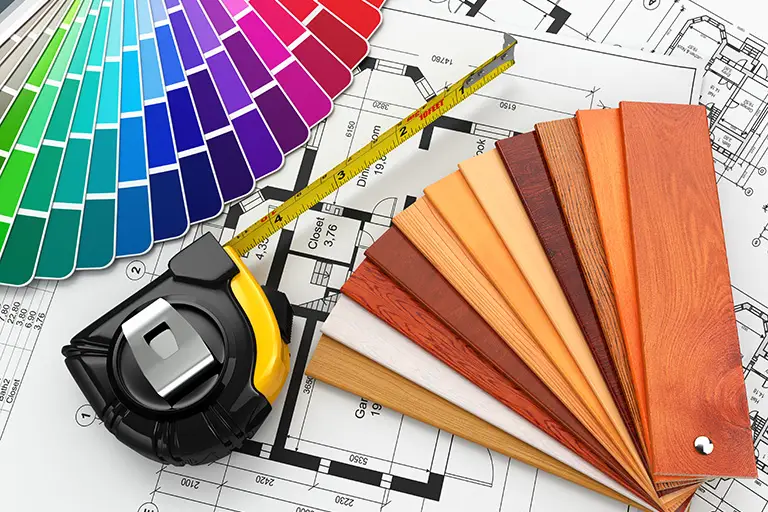
- Details
- Written by: Pat Gremillion
Printing construction documents in color has traditionally been deemed a luxury item. For most, it was an expense that was simply too costly to contemplate. However, in the printing industry, there have been some very notable technologies that have truly changed operational processes. Ammonia exposed blueline prints, Xerographic printing, overlay drafting, CAD plotting, the move from ammonia exposed prints to toner or ink on bond paper — all of these technologies had a tremendous impact on productivity and processes during the production of construction documents and specifications. Today, as you walk through a print production facility, you will gaze upon the next major transition in the production of construction documents: high volume color printing.

- Details
- Written by: Lance Wright
Monochrome printing of construction documents has been the only game in town in the U.S. for over a century. Using traditional monochrome printing methods, color information within drawing sets is represented via the use of dot or line patterns that are often difficult to discern or duplicate. Until the relatively recent past, design firms created their drawings knowing that they would eventually have to be printed in black-and-white. Large format color printers for AEC use have been around for almost 30 years. But color printing has generally been reserved for producing presentation boards for client meetings or, on rare occasions, for printing drawing set covers in color (if they included large renderings). This is because color printing speeds have been too slow and the costs too prohibitive to use on the scale required to produce entire sets of construction drawings.
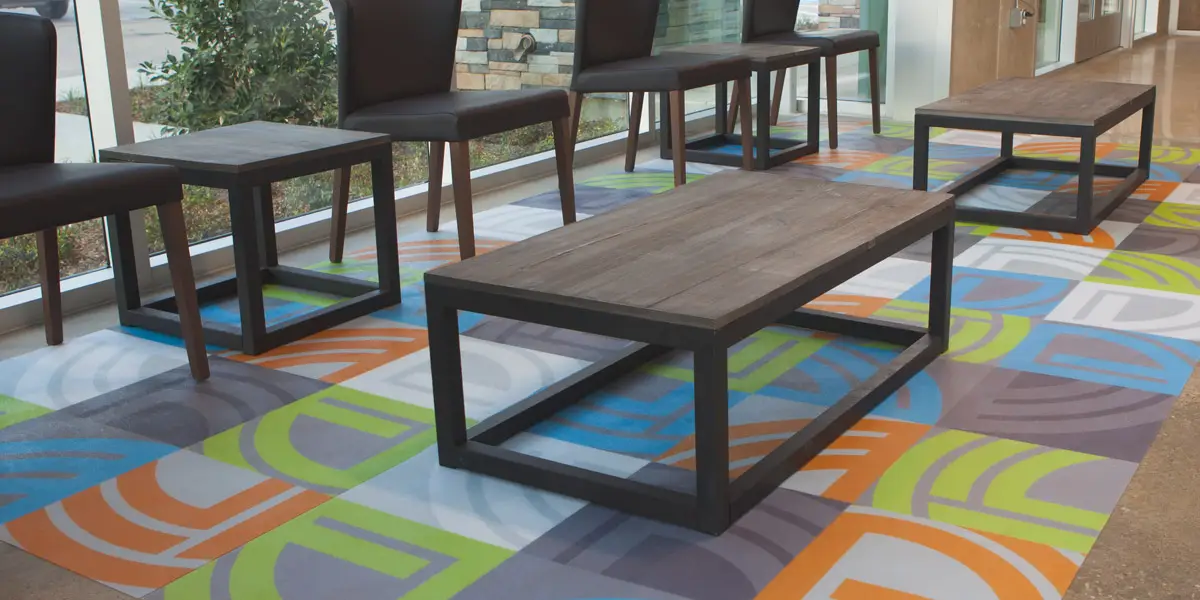
- Details
- Written by: Jake Markey
When consulting, not a week goes by where you don’t hear the phrase, “I wish we could put some graphics there” or “It would be great if they made a product that could do this.”; Even “I wonder if my idea is even possible”; will frequently be heard. Thankfully, with the massive variety of materials available today, manufacturers are making these wishes a reality.
In the past, products like regular adhesive vinyl or standard scrim vinyl were tailored and “rigged to work”; for all kinds of applications. While it’s great to have an all-purpose product, the uses were very limited when it came to highly specific and technical projects. Today, the one-size-fits-all model has been eliminated and there is now a material for most every application.
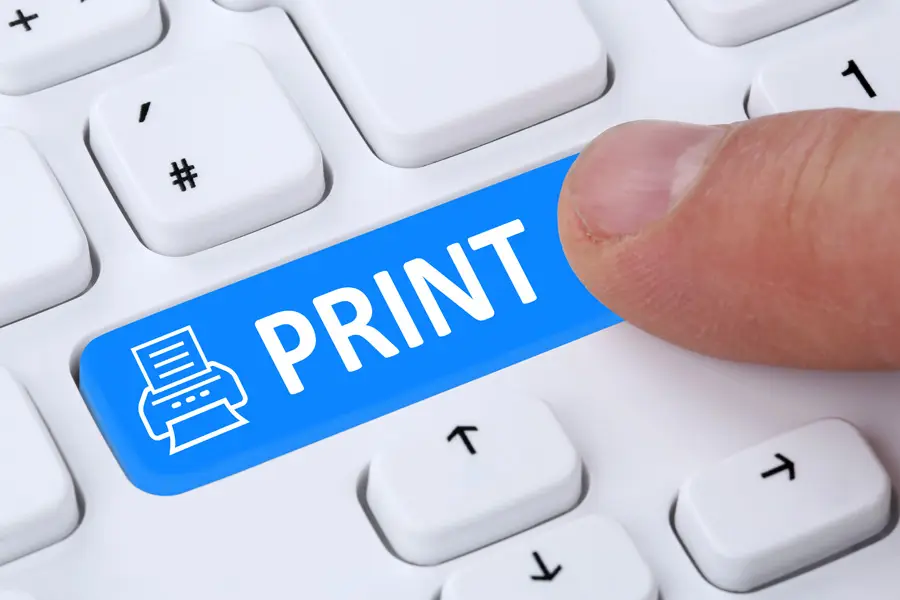
- Details
- Written by: Kent Long
The printing industry has been around for hundreds of years. Over the last 20 years, we have witnessed some truly great breakthroughs in digital printing. Each one has brought faster printing and better quality. Each has its own inherent limitations as well.
When the Durst Lambda 130 RGB photo printer came out, it was a game changer. It was consistently fast and provided continuous tone and high quality prints on photographic papers. When inkjet technology made the leap from lines and drawings to graphics, we started to see vibrant colors on many different substrates. This was a great leap forward in the digital printing industry. But each still had its limitations. How fast? How thick? How many colors? What type of inks? Do you laminate? How wide? Amongst many others.

- Details
- Written by: Rob Lowe
Have you ever walked into a building and felt that you’ve somehow transported elsewhere, as if by magic?
Imagine: it’s a cold winter day in your hometown and you walk into your favorite restaurant or retail shop. Within seconds, thanks to their tropical décor, you feel that you’re no longer in the throes of a dreary winter storm. Rather, you feel warm, light and at ease. It’s almost as if you are spending a relaxing day on the beach, rather than running errands on your lunch break. It’s a familiar sensation, like the one you had when you were on vacation in San Diego — or was it the Bahamas?

- Details
- Written by: Jay Hawkins
What makes a salesperson successful? A lot of things. But one of the most important aspects of being a successful salesperson is being able to deliver a customer’s vision.
Some visions are complex, such as delivering a large rush order. Some are as easy as printing a single piece of paper. The latter is obviously simpler, but great salespeople find great satisfaction in delivering complex customer visions. This is what allows for the ultimate relationship between the customer and the salesperson. And what allows the salesperson to earn the title of being “great”.
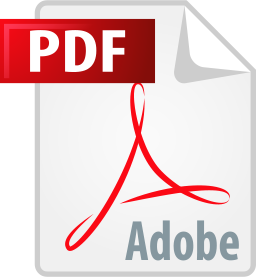
- Details
- Written by: Ben Noebels
In today’s print market, the odds of receiving a set of plans or specs in PDF format are a given. PDF, which stands for Portable Document Format, has become the primary file format used in the AEC market.
PDFs are used to distribute, view and print information. Commercial printers see PDF files every day, and are expected to be able to print exactly what the file shows. Despite this, the printer only has about a 50/50 chance the PDF will print the same as it appears on screen. Because all PDF files are not created equally, this creates a lot of problems for both the printer and the client.

- Details
- Written by: Eddie Smith
Window graphics are a great way to get noticed, especially during the holidays. Festive and fun window decorations are sure to generate buzz, no matter what type of business your company is in. The appeal of window graphics is not just that they add color to your windows, it’s that they are a fun and unique way to grab your customer’s attention. They can be designed to coordinate with your company’s style and brand, communicating positively to your customers and promoting your business.
What better way to capitalize on high foot and vehicle traffic than with the hordes of shoppers that are sure to be frequenting malls and shopping centers this holiday season? Window graphics are the perfect way to get your message out there and let customers know what your holiday promotions, campaigns, and specials are.
The creative possibilities for holiday-specific window graphics are virtually endless. There are two main varieties to choose from when it comes to window graphics: static cling and window perf. These substrates help you achieve different results, both being effective in their own way.
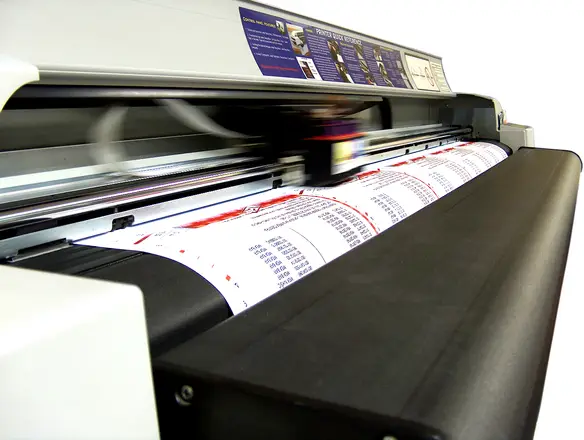
- Details
- Written by: Ira Bowman
Have you ever wondered what the word ‘reprographics’ means? If you’re like most in the AEC (Architectural, Engineering, and Construction) industry, you should not only know what this word means but you should know that you’ve depended on reprographics companies (such as Thomas Printworks) as a vital part of your business for generations.
For the record, ‘reprographics’ is a derivative of two words (reproduction and graphics) smashed together. Reprographics is literally the mechanical reproduction of an image. Reprographics is not only thriving, it is evolving. More technologies with a variety of inks and toners, combined with new substrates, are allowing reprographic firms to expand their offerings at an almost neck-breaking pace.
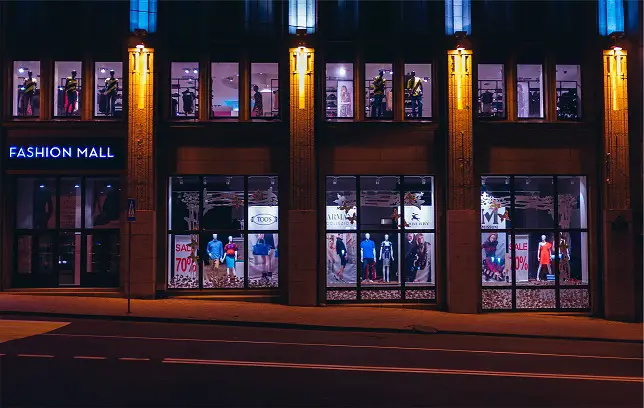
- Details
- Written by: Chris Miller
In this day and age in the highly competitive retail and restaurant industries, engaging the customer is more difficult (and important) than ever. Attracting new customers and keeping existing customers coming through your doors are the only ways to ensure that sales and profits remain high and that loyalty is not lost to your competitors. So how, you ask, is the best or easiest way to do this?
Simply put, there are many different methods of getting a theme or message across that your store or restaurant is the place to be. Brands need to work with their marketing managers to understand what will work best for their customer demographic and cater to their wants and needs. This can include customized direct mail, flyers in the weekly newspaper, advertisements in magazines your customers read, etc. All these are great, but how can you really scream at your customer at the store level?
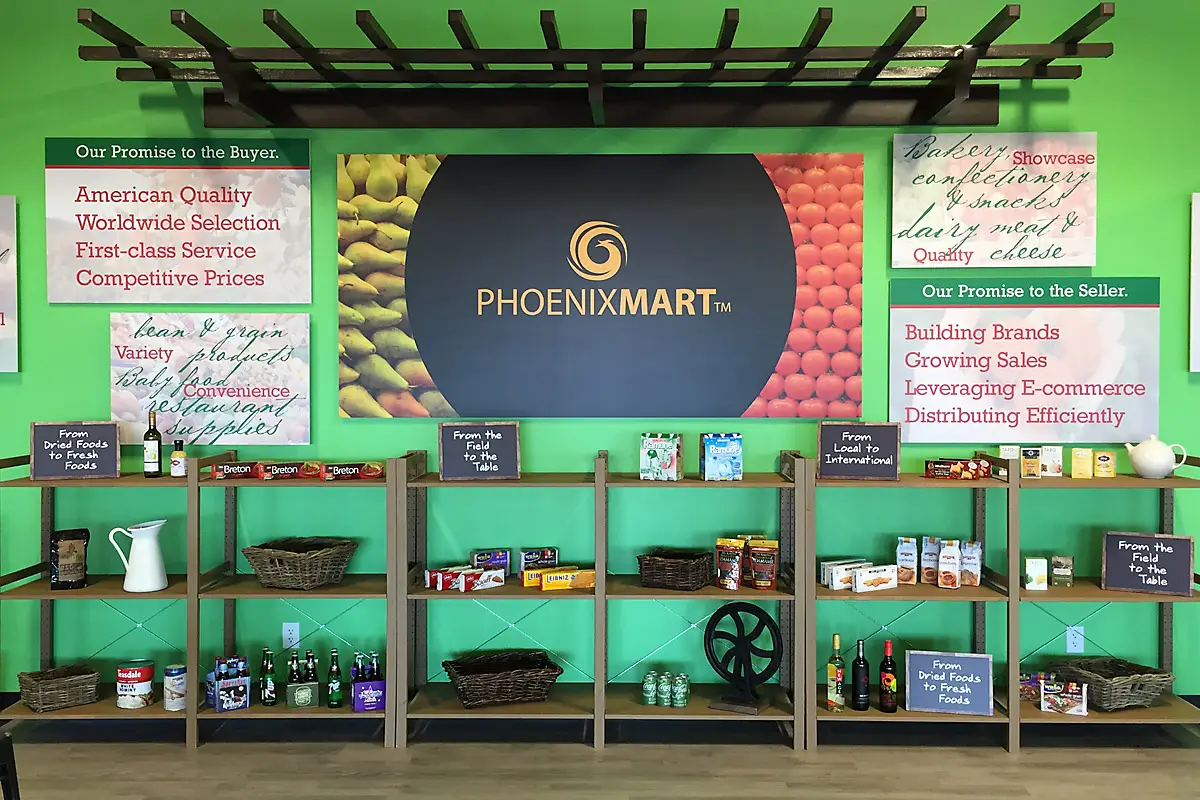
- Details
- Written by: Elizabeth Woods
PhoenixMart is a 1.58 million square foot business-to-business sourcing center for manufacturers and distributors to showcase their products by providing a gateway for promoting American business to domestic and international markets. The complex features more than 2,000 manufacturers and categories including Home and Hotel, Industrial and Automotive, Electronics and Accessories, Food and Beverage, Office and Recreation, and Fashion and Variety.
Contact a Specialist Today!
We would love to help you with your printing needs. Fill out the form below to request a free evaluation and consultation.



